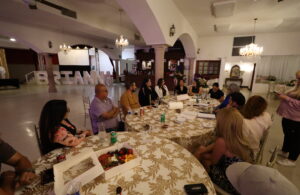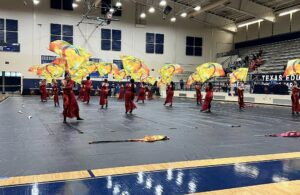- La Feria Community Holds Succesful Business Mixer Event
- Little Nashville to Take Place in Downtown Mercedes
- Lions Basketball Captures District Gold
- La Feria ISD Students Compete in Regional Chess Tournament
- Lions End First Half of 32-4A on a High Note
- La Feria ISD Held Another Successful Parent Conference
- Strong Appearance for Lions at Hidalgo Power Meet
- LFECHS Students Get to Meet Local Actress
- Students Participate in Marine Biology Camp
- Two LFECHS Students Qualify for All-State Band
Halloween is a Tradition That Dates Back Many Years
- Updated: October 26, 2024
By Mike Villarreal
As we approach the season of ghosts, ghouls, and candy corn, the excitement is palpable. Kids eagerly plan their costumes, ready to hit the streets for some sweet treats. It’s not just the kids; many adults are equally thrilled, counting down the days to October to dress up or transform their yards into spooky wonderlands.
Halloween gives many of us an excuse to be kids again and show our neighbors a different side. Many festivals and parties offer safe and fun places to celebrate this month. Some schools even have costume contests, and there are haunted houses you can visit, such as the Monte De Los Muertos, hosted by Donnas Corn Maze in Donna.
For those seeking a more intense thrill, haunted houses are a popular choice. The Monte De Los Muertos, hosted by Donnas Corn Maze in Donna, is a prime example. A walk through their wicked woods promises an experience that will send shivers down your spine. “Enter if you dare, and leave if you can,” they say.
When I think back to my childhood, Halloween always stands out as a time of pure excitement. I didn’t always get to pick my costume, but that was part of the fun. Whether I was Dracula or the Devil, the thrill of the night was always the same – the endless supply of candies. I also remember my mom loving having a big bowl of candies to give out and seeing all the kids dressed up.
October is also a great month to watch scary movies such as The Exorcist, Poltergeist, Nightmare on Elm Street, Friday the 13th, Ghostbusters, A Nightmare Before Christmas, and Halloween.
Halloween falls on October 31 every year; this year, it will be on a Thursday. Its history can be traced back to the ancient Celtic Festival of Samhain, in which people would wear costumes and light bonfires to scare off ghosts.
Pope Gregory 3 designated All Saints Day to honor all saints on November 1. Eventually, some of the traditions of Samhain were incorporated for All Saints Day, with the day before known as All Hallows Eve and later becoming known as Halloween.
Two thousand years ago, the Celts lived in what is now Ireland, Northern France, and the United Kingdom and celebrated the new year on November 1. For the Celts, this day marked the end of harvest and summer and the start of winter. The Celts believed that on the night before the new year, the veil between the worlds of the dead and the living became blurred. They celebrated Samhain on October 31 because they believed the ghosts of the deceased would return to the earth.
To mark this event, druids built sacred bonfires to burn crops and animals as sacrifices. The Celts also wore costumes made of animal skins and heads. Once the festivities were over, they would re-light their hearth fires, which had been put out earlier to help protect them throughout winter. By A.D. 1000, the church made November 2 All Saints Day to honor the dead. On All Saints Day, the celebration was similar to Samhain, which also involved people dressing in costumes, parades, and huge bonfires.
The night before All Saints Day, which was the night of Samhain for the Celts, was eventually called All Hallows Eve and would later be known as Halloween.





